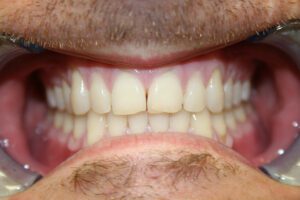Dental anxiety is a hurdle in seeking much-needed dental care. Anxiety about going to the dentist puts you in danger of not getting the proper treatment for your oral problem. But can sedation solve your fear of pain?
Learn more about using sedation dentistry to overcome your dental anxiety and achieve a stress-free experience at the dentist’s.
Understanding Dental Anxiety
Dental anxiety or dental phobia involves the apprehension of going to the dentist due to a fear of the procedures, settings, or the dentists themselves.
When experiencing dental anxiety, people go through a high level of stress and nervousness before undergoing treatments. Even a routine checkup can trigger their fear. While the causes vary, the more common ones are:
- A negative experience in the past resulting in trauma, especially during childhood
- Genuine fear of pain or discomfort during procedures
- Feeling vulnerable in the dental chair
- Fear of needles because some methods involve needles and instruments that look intimidating
- A heightened sensitivity to sounds, scents, or textures in the dental environment
Approaches like sedation dentistry and communication with understanding dental professionals can help people with anxiety manage and overcome it.
What Is Sedation Dentistry?
As the name suggests, sedation dentistry uses sedatives to induce relaxation and tranquility in patients during dental procedures. It doesn’t always work for every patient, but it does offer a way to manage fear and anxiety.
Different levels of sedation exist:
- Mild sedation will keep you relaxed but awake.
- Moderate sedation keeps you conscious, but you may experience forgetfulness.
- At the maximum level, you may lose consciousness, but the dentist can still rouse you if necessary.
There are different ways to achieve sedation, including:
- Inhalation of the “laughing gas”: N2O or nitrous oxide is a substance that induces relaxation. You inhale the substance through a mask and reach calmness after 3-5 minutes.
- Oral medication: Your dentist will use sedative pills to be taken orally before the procedure. Valium is among the medicines dentists usually prescribe.
- Intravenous sedation: The most controlled type of sedation, the sedatives are delivered straight to your vein.
Do Dentists Use General Anesthesia?
When necessary, yes, dentists use general anesthesia for more complex procedures. An oral surgery requiring special treatment or extremely anxious children may receive anesthesia.
However, dentists must have special qualifications to deliver anesthesia. Check if your dentist is qualified for it or if your dental practice has an anesthesiologist.
The Sedation Process
Before the Sedation Takes Place
Your dentist will thoroughly check your general health and oral condition. Your medical history will be discussed, including details about allergies and medications you are taking.
For some methods, you may have to refrain from drinking or eating for several hours before the procedure. Ask questions and tell your dentist every detail to ensure the sedation method is safe and effective.
During the Sedation
Qualified dental professionals will perform the actual sedation. Follow their instructions and relax during the procedure.
Your dental team will monitor you to maintain safety. The team will respond quickly to any situation that arises.
After the Sedation
You can feel dizzy, groggy, and disoriented after coming out of the sedation. Take a family member or a friend to accompany you; they will help you get home safely. Make sure you are rested before doing any activities.
If your dentist prescribes any post-treatment medication or guidelines, your friend or family member can help you remember them.
Get Rid of Anxiety with Sedation Dentistry
Using sedatives to alleviate dental anxiety will work if you openly communicate your needs with your dental specialist. Sedation dentistry lets you get past the hurdle. Never let fear win and stop you from achieving a healthy, happy smile.

